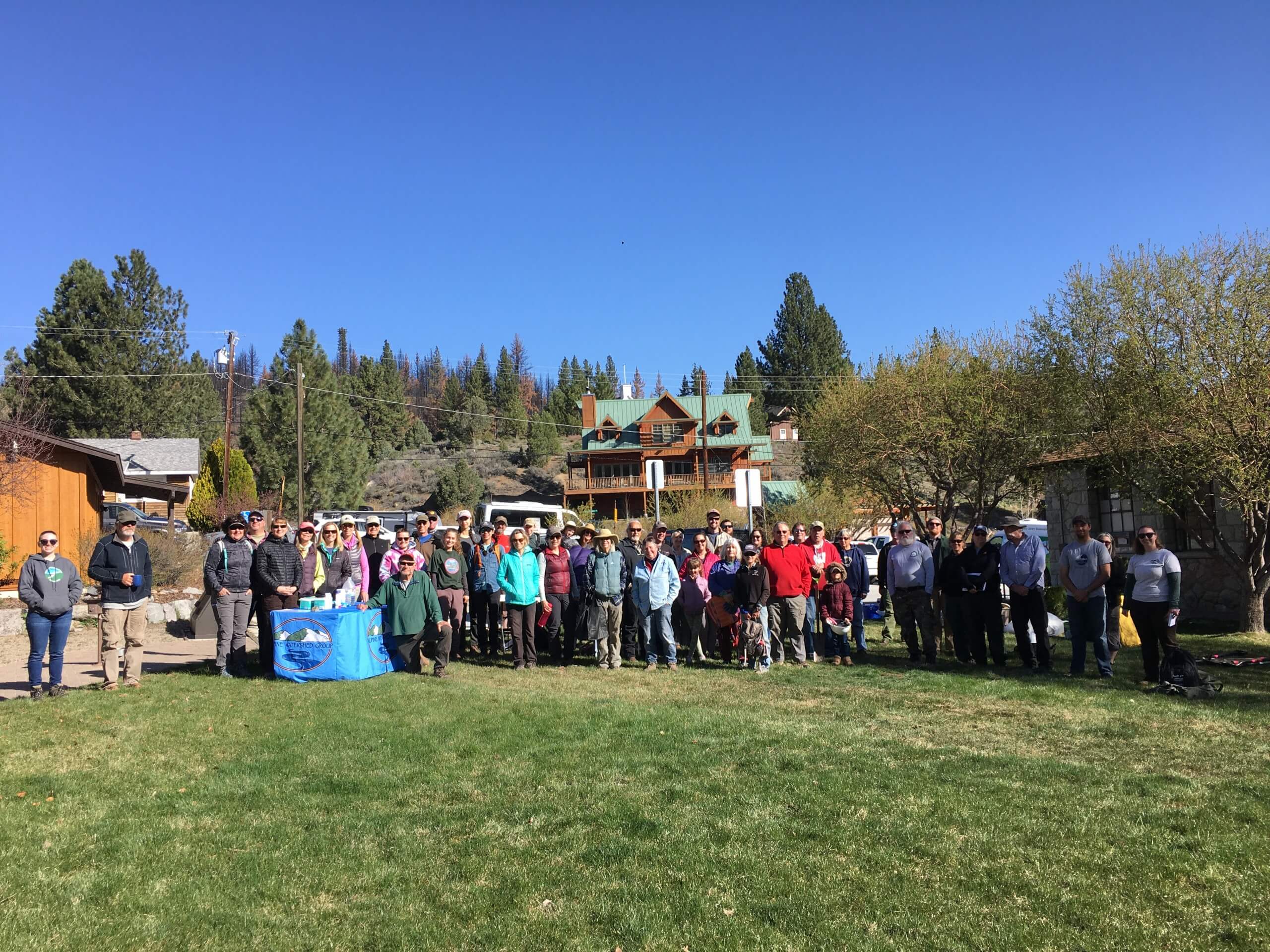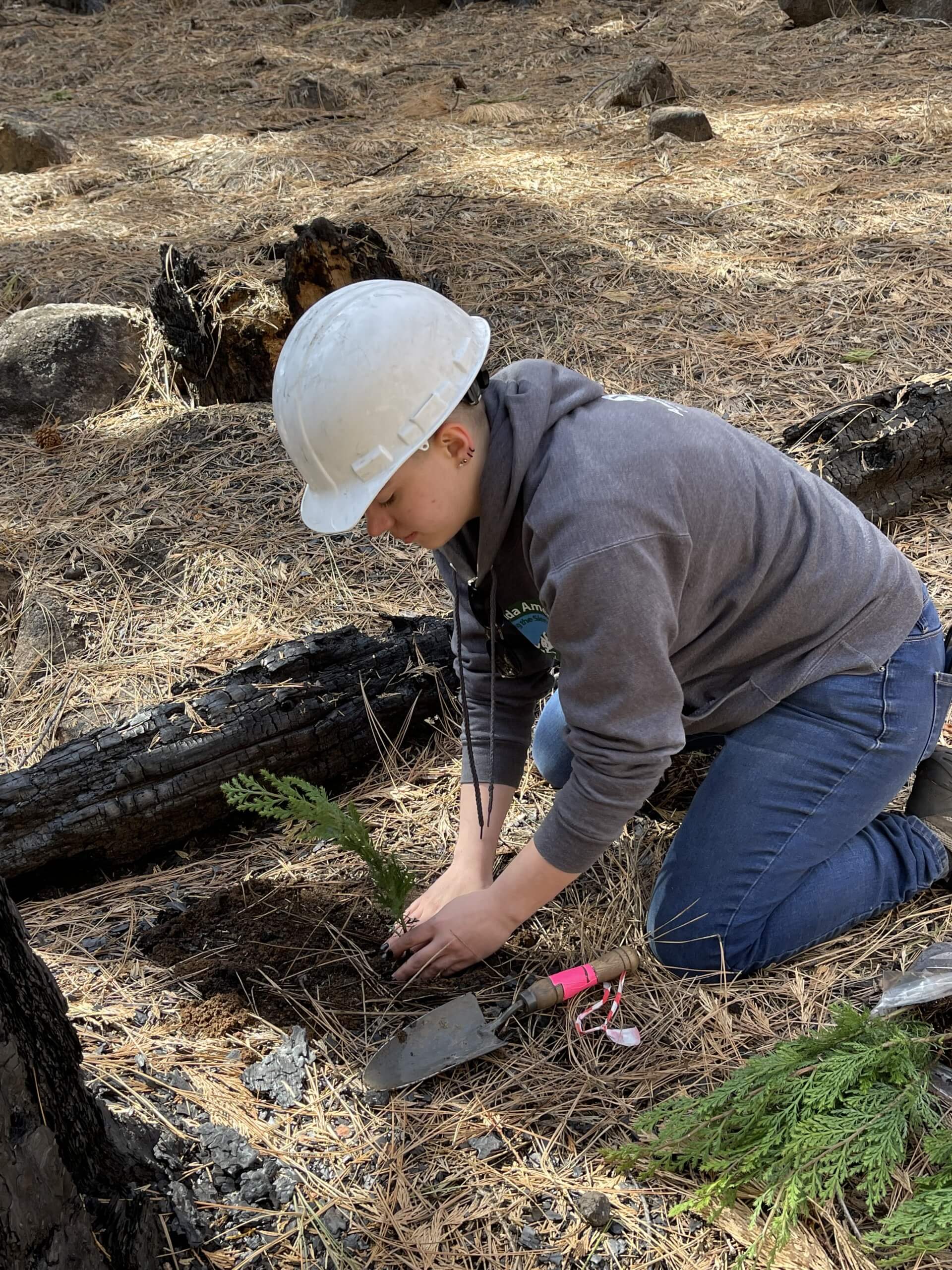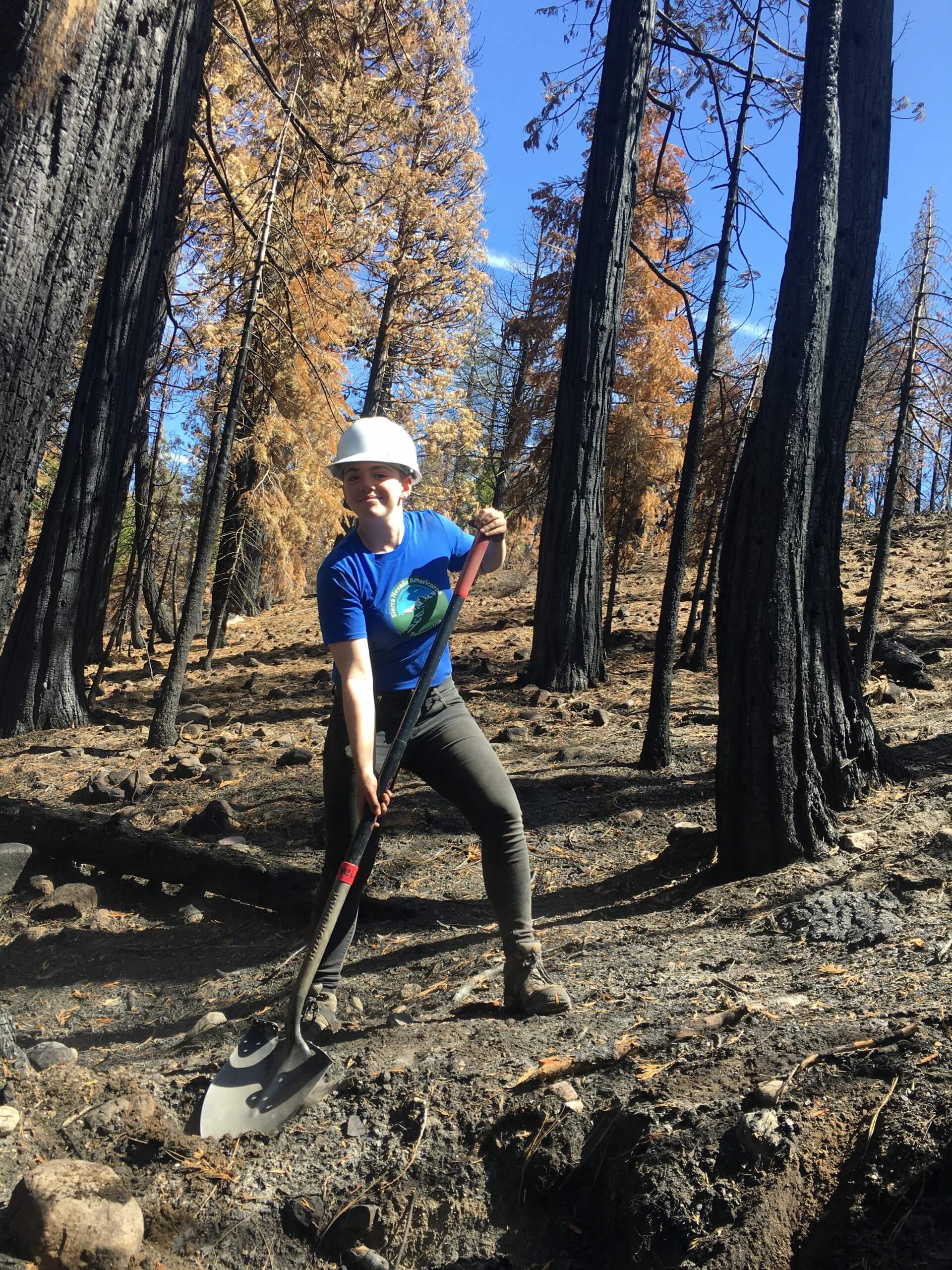Sierra Nevada Alliance SNAP member, Sierra Riker works with their host site, Alpine Watershed Group (AWG) and plants trees in the Tamarack Fire burn scar located in the Humboldt-Toiyabe National Forest located in Alpine County, CA.
The project included a planting day on March 24 in the Musser and Jarvis Watershed with a CAL FIRE California Conservation Corps (CCC) Crew. Mary Young (Markleeville Water Company Board President) and her husband Bill Young helped plan three tree planting dates (March 23-25) by hiring the CCC crew. On the day Sierra attended, approximately 1,000 trees were planted with a total of over 3,000 planted over the three-day project.

Volunteer group, April 9 Tree Planting Workday
On April 9 and May 1, two other community workdays were co-hosted by AWG, Alpine Trails Association, and U.S. Forest Service staff. Sierra worked at Grover Hot Springs State Park on April 9 and along Pleasant Valley Road on May 1. Trees planted were Jeffrey pine, ponderosa pine, incense cedar, and sugarpine, all donated to the U.S. Forest Service. AWG had two sponsors for these events: Trout Unlimited-Sagebrush Chapter and Alpine County Tobacco Control Program. Keep Tahoe Blue, Great Basin Institute, and Alpine Trails Association provided hard hats. With 112 volunteers, over 4,000 trees were planted on April 9 and May 1 combined.
These tree plantings help speed up forest regeneration and prepare the forest for a warming climate and engage the community that is still hurting from the Tamarack Fire in the restoration efforts.

Sierra planting an incense cedar at Grover Hot Springs State Park on the April 9 Tree Planting day
The Tamarack Fire has heavily impacted the Carson River Watershed. Restoration efforts to reduce erosion have already been conducted to maintain the water intake structure that supplies 70% of Markleeville’s water. Water quality over the next couple of years is expected to decrease compared to pre-fire conditions, including the possibility of increased occurrences of harmful algal blooms due to ash runoff. By planting trees in the area, the impacts of the burn will be less severe closer to the future since the effort is meant to jumpstart forest restoration. Established trees will help to hold soil in place, provide better habitat/conditions for important plant and animal species in the area, and help to increase water penetration and quality. AWG is dedicated to improving and protecting ecosystem health and water quality in Alpine County, and mitigating fire impacts will further this cause.
Planting trees in a burn area also helps to speed up the restoration process. Planting different tree species contributes to the research on assisting ecosystems in adapting to a warmer climate. These efforts are meant to establish resilient ecosystems and ensure high water quality and recreational opportunities for communities.
Photos by Sierra Riker, Kimra McAfee, Maureen Easton


